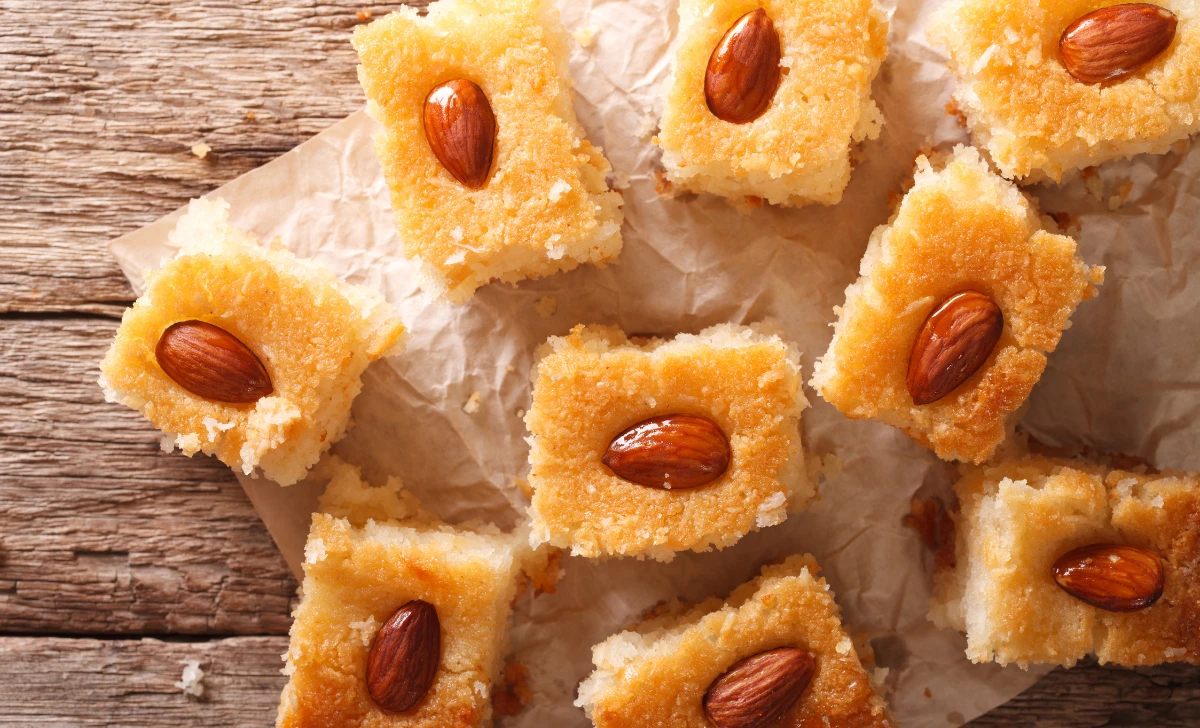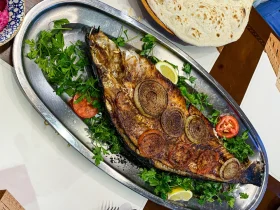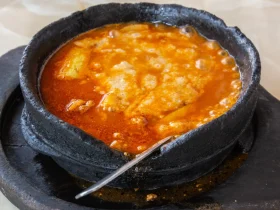Basbousa, also known as revani or harissa, is a traditional Middle Eastern and North African dessert that has gained popularity worldwide. This delightful sweet treat features a moist semolina cake soaked in a fragrant sugar syrup. It’s easy to make and perfect for any occasion. In this article, we will explore the origins of basbousa, the ingredients needed, step-by-step instructions, tips for a perfect result, serving suggestions, variations, its popularity in different countries, and even the health benefits it offers.
[ez-toc]
History
Basbousa, a delectable Middle Eastern and North African dessert, has a fascinating history that spans centuries. While its exact origin is debated, it is widely believed that basbousa originated in Egypt and gradually spread to neighboring countries.
The roots of basbousa can be traced back to the medieval Arab world, where a similar dessert called “harisa” was popular. Harisa was made with semolina, honey, and butter, and it was enjoyed during special occasions and festive celebrations. Over time, the recipe evolved, and basbousa as we know it today emerged.
The name “basbousa” is derived from the Arabic word “basbasa,” which means to moisten or soak. This name perfectly captures the essence of the dessert, as basbousa is traditionally soaked in a sweet syrup after baking, resulting in a moist and syrup-infused texture.
As basbousa gained popularity in Egypt, it soon spread throughout the Middle East and North Africa, becoming a beloved dessert in countries such as Lebanon, Syria, Palestine, Jordan, and Morocco. Each region has its own slight variations in the recipe, reflecting the local culinary traditions and flavors.
In Egypt, basbousa became an integral part of the local cuisine and is often served during religious holidays, family gatherings, and weddings. It is considered a symbol of hospitality and is offered to guests as a gesture of warmth and generosity.
With the migration of people from the Middle East and North Africa to different parts of the world, basbousa found its way into international communities. Today, it can be found in Middle Eastern and North African restaurants worldwide, delighting people of diverse backgrounds with its unique flavors and textures.
Basbousa’s popularity has also grown through social media and food blogs, where enthusiasts share their recipes, variations, and tips for making the perfect basbousa. Its widespread appeal lies in its simplicity, versatility, and the comforting sweetness it brings to the palate.
As the love for basbousa continues to spread, this delightful dessert has become a symbol of cultural richness and culinary artistry, connecting people through the shared joy of indulging in a treat that transcends borders and brings communities together.
Time
| Step | Time |
|---|---|
| Preparation and Cooking Time | |
| Preparing the syrup | 10 minutes |
| Preparing the batter | 15 minutes |
| Baking the basbousa | 45-60 minutes |
| Cooling and serving | |
| Total Time | 1 hour 10 minutes |
Please note that the total time mentioned above is an approximation and may vary based on individual cooking methods and equipment. It’s always recommended to refer to the specific recipe instructions for accurate timing.
Ingredients
| Ingredients | Quantity |
|---|---|
| Semolina | 1 cup |
| Unsweetened shredded coconut | 1/2 cup |
| Sugar | 1/2 cup |
| Plain yogurt | 1/4 cup |
| Melted butter | 1/4 cup |
| Baking powder | 1/2 teaspoon |
| Baking soda | 1/4 teaspoon |
| Vanilla extract | 1/4 teaspoon |
| Slivered almonds (for garnish) | As desired |
Note: The above quantities are based on a serving size for 2 people. Adjust the quantities accordingly if you need to serve more or fewer people.
Directions
Preparing the Syrup:
- Combine Sugar and Water: In a saucepan, combine 1 cup of sugar and 1 cup of water.
- Dissolve Sugar: Place the saucepan over medium heat and stir until the sugar dissolves.
- Prevent Crystallization: Add a few drops of lemon juice to prevent crystallization while the syrup simmers.
- Simmer the Syrup: Bring the syrup to a boil, and then reduce the heat, allowing it to simmer for 10 minutes.
- Cool the Syrup: Remove the syrup from the heat and let it cool while you prepare the batter.
Preparing the Batter:
- Combine Dry Ingredients: In a mixing bowl, combine the semolina, shredded coconut, sugar, baking powder, and baking soda.
- Add Wet Ingredients: Add the melted butter, plain yogurt, and vanilla extract to the dry ingredients.
- Mix Thoroughly: Mix well until all the ingredients are thoroughly combined, ensuring there are no lumps in the batter.
- Rest the Batter: Let the batter rest for about 10 minutes, allowing the semolina to absorb the liquid.
Baking the Basbousa:
- Preheat the Oven: Preheat your oven to 350°F (175°C) and grease a baking dish.
- Pour the Batter: Pour the basbousa batter into the greased dish and spread it evenly.
- Score the Surface: Use a knife to score the surface of the batter, creating diamond-shaped or square pieces.
- Garnish with Almonds: Place a slivered almond on top of each scored piece for added visual appeal.
- Bake the Basbousa: Bake the basbousa in the preheated oven for 45-60 minutes or until golden brown.
- Cool and Serve: Remove the basbousa from the oven and let it cool for a few minutes before serving.
Enjoy your homemade basbousa, a delightful Middle Eastern dessert that’s sure to impress with its moist texture and fragrant syrup-soaked goodness.
Equipment Required
Nutrition Information
| Nutrition Information | Amount per Serving |
|---|---|
| Serving Size | 1 piece (approx. 100g) |
| Calories | 300 |
| Total Fat | 12g |
| – Saturated Fat | 7g |
| Cholesterol | 25mg |
| Sodium | 150mg |
| Total Carbohydrate | 42g |
| – Dietary Fiber | 2g |
| – Sugars | 25g |
| Protein | 5g |
Please note that the nutrition information provided is an approximation and may vary slightly depending on specific ingredients and variations in the recipe.
Tips
- Choosing the Right Semolina: Opt for a coarse semolina for a grainier and more authentic texture in your basbousa. Avoid using fine semolina, as it may result in a softer and less traditional outcome.
- Enhancing Flavor with Nuts and Spices: Feel free to experiment with flavors by adding crushed pistachios, chocolate chips, or a hint of rosewater or orange blossom water to the batter. These additions can add a delightful twist to the traditional basbousa.
- Getting the Syrup Consistency Right: The syrup plays a crucial role in infusing moisture and sweetness into the basbousa. Aim for a warm syrup that is neither too thin nor too thick. It should be thin enough to penetrate the cake but not make it overly soggy.
- Greasing the Baking Dish: Make sure to thoroughly grease the baking dish to prevent the basbousa from sticking. This will also help in achieving a smooth release when serving.
- Scoring the Surface: Scoring the surface of the basbousa before baking helps the syrup seep into the cake evenly. Create diamond-shaped or square pieces with a knife, ensuring that the cuts are deep enough to allow the syrup to penetrate.
- Allowing the Basbousa to Cool: After baking, allow the basbousa to cool for a few minutes before serving. This helps in setting the texture and allows the syrup to further infuse into the cake, resulting in a moist and tender bite.
Pros & Cons
| Pros | Cons |
|---|---|
| ✔️ Delightful and flavorful | ❌ High in calories |
| ✔️ Easy to make | ❌ Contains saturated fat |
| ✔️ Versatile and customizable | ❌ High in sugar |
| ✔️ Popular in various cultures | ❌ Not suitable for gluten-free diets |
| ✔️ Moist and syrup-infused | ❌ Requires some baking skills |
Conclusion
Basbousa, the moist and syrup-soaked dessert originating from the Middle East and North Africa, is a true delight for the taste buds. With its rich history and versatile nature, basbousa has become a beloved dessert in many cultures around the world.
This recipe has provided you with a step-by-step guide to create your own batch of delicious basbousa. From preparing the syrup to baking the cake, each step has been carefully outlined to ensure a successful outcome. The combination of semolina, coconut, and fragrant syrup creates a dessert that is both satisfying and full of flavor.
While enjoying a slice of basbousa, you’ll savor the moist texture and the delightful sweetness that comes from the infused syrup. Whether you’re hosting a gathering, celebrating a special occasion, or simply treating yourself, basbousa is sure to impress and leave a lasting impression on your taste buds.
Feel free to customize your basbousa by adding variations like chocolate chips, pistachios, or a touch of floral essence. Let your creativity shine and experiment with flavors that suit your preferences. Remember the tips provided to help you achieve the perfect texture, consistency, and taste.
So, why not give this basbousa recipe a try? Gather the ingredients, follow the steps, and experience the joy of indulging in a dessert that has captivated people for generations. The warmth, sweetness, and cultural richness of basbousa await you. Embrace the culinary journey and enjoy the delightful flavors that this delightful dessert brings.
Facts
- The Sweet Journey 🚀
- Basbousa’s history can be traced back to ancient Egypt, where it was enjoyed by pharaohs and commoners alike. Imagine indulging in a dessert that has stood the test of time, transcending generations with its delightful flavors.
- A Cake with Many Names 🌍
- Basbousa is known by various names across different cultures. In Egypt, it’s called basbousa, while in Greece, it’s known as revani. In Turkey, it goes by the name of şambali. No matter the name, the deliciousness remains the same!
- Soaking up the Sweetness 🍯
- Basbousa’s signature characteristic is its ability to soak up the syrup, creating a moist and luscious texture. It’s like a sponge that eagerly absorbs the aromatic sweetness, making each bite a heavenly experience.
- A Sweet Celebration 🎉
- Basbousa is often associated with joyous occasions such as weddings and festive gatherings. In Middle Eastern cultures, it is customary to share basbousa during special celebrations as a symbol of happiness and togetherness.
- The Art of Patterns 🎨
- When preparing basbousa, the surface is typically scored before baking to create beautiful patterns. These patterns not only enhance the visual appeal but also serve as a guide for the syrup to seep into the cake, ensuring every bite is infused with sweetness.
FAQ’s
What is the origin of basbousa?
Basbousa is believed to have originated in Egypt and has since become popular in various Middle Eastern and North African countries.
Can I use a different type of semolina for basbousa?
It is recommended to use coarse semolina for the best texture and authentic flavor in basbousa. Fine semolina may yield a softer result.
How long does basbousa stay fresh?
When stored in an airtight container at room temperature, basbousa can stay fresh for up to three days.
Can I freeze basbousa?
Yes, basbousa can be frozen. Ensure it is well-wrapped in plastic wrap or placed in an airtight container before freezing. Thaw it in the refrigerator overnight before serving.
Is basbousa suitable for vegans?
Basbousa can be made vegan-friendly by substituting dairy-based ingredients such as yogurt and butter with plant-based alternatives like coconut yogurt and vegan butter.
Can I reduce the sugar content in basbousa?
Yes, you can adjust the amount of sugar to suit your taste preferences. However, keep in mind that sugar plays a crucial role in the overall texture and moisture of the dessert.
How can I prevent the basbousa from becoming too dry?
To prevent dryness, ensure that you do not overbake the basbousa. Stick to the recommended baking time and monitor the cake’s color and texture as it bakes.
Can I make basbousa without coconut?
Yes, you can omit the shredded coconut from the recipe if desired. However, coconut adds a unique flavor and texture to the basbousa.
Can I make basbousa in advance for a party or gathering?
Yes, basbousa is a great dessert to make in advance. It can be prepared a day ahead and stored in an airtight container until serving.
Can I use different nuts for garnishing basbousa?
Absolutely! While slivered almonds are traditionally used for garnishing, you can experiment with other nuts such as pistachios, walnuts, or even cashews for a different flavor and presentation.












Leave a Review